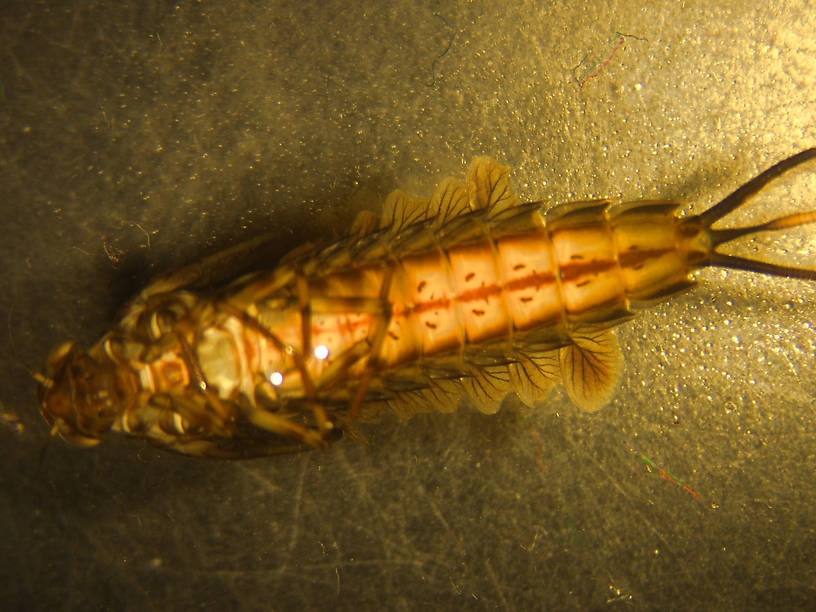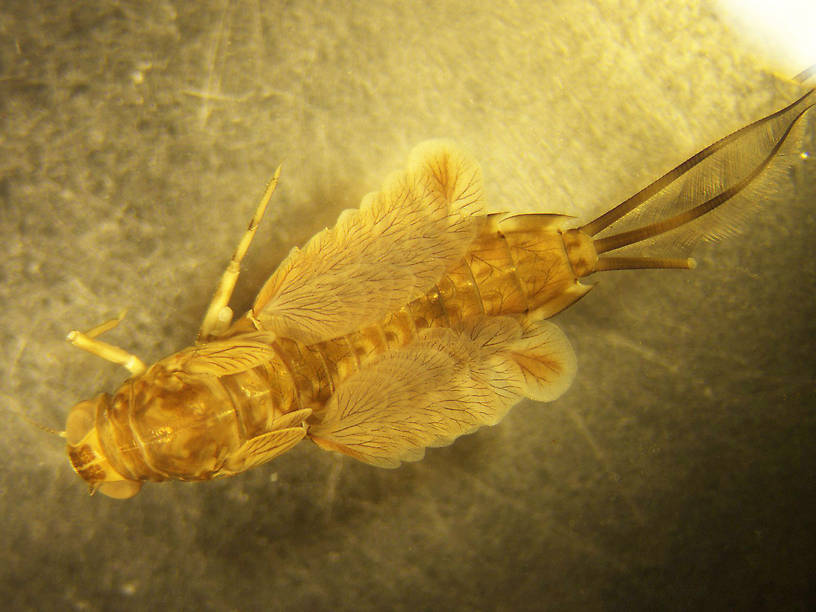
Hex Mayflies
Hexagenia limbata
The famous nocturnal Hex hatch of the Midwest (and a few other lucky locations) stirs to the surface mythically large brown trout that only touch streamers for the rest of the year.


Mayfly Species Siphlonurus phyllis (Gray Drakes)
Species Range
Physical description
Most physical descriptions on Troutnut are direct or slightly edited quotes from the original scientific sources describing or updating the species, although there may be errors in copying them to this website. Such descriptions aren't always definitive, because species often turn out to be more variable than the original describers observed. In some cases, only a single specimen was described! However, they are useful starting points.
Male Spinner
Wing length: 13-14 mm
A rather large species having a conspicuous dark ventral stripe.
Head and thorax blackish brown. Thorax with yellowish shadings on the anterior portions. Legs dull olive brown; femora with apical brown bands. Wings hyaline, faintly tinged with brown in the basal area. Veins dark.
Abdomen dark brown dorsally. Dark oval spots and lateral triangles present. The pale anterior triangles are yellow, this color extending along the lateral margin. Ventrally yellowish. A brown mid-ventral stripe is present, and two small brown dots in each sternite, touching the median stripe. Anterior to the small dots, and laterad of them, are two large brown dots. Light brown shading along the lateral margin, in place of the usual lateral patches. Sternite 9 largely pale yellow, diffusely shaded with brown in the median area; a deep brown lateral streak on each side. Postero-lateral edge of sternite 9 produced into a prominent sharp tooth or spine. Forceps base squarely truncate on its apical margin. Forceps pale yellowish. Tails whitish. Genitalia as in fig. 123.
Nymph
The nymph of this species has double gills, on each gill-bearing segment of the abdomen. The legs are banded, and the tail has the usual black band beyond the middle.
Specimens of the Mayfly Species Siphlonurus phyllis
2 Nymphs
Start a Discussion of Siphlonurus phyllis
References
- Jacobus, L. M., Wiersema, N.A., and Webb, J.M. 2014. Identification of Far Northern and Western North American Mayfly Larvae (Insecta: Ephemeroptera), North of Mexico; Version 2. Joint Aquatic Science meeting, Portland, OR. Unpublished workshop manual. 1-176.
- Needham, James G., Jay R. Traver, and Yin-Chi Hsu. 1935. The Biology of Mayflies. Comstock Publishing Company, Inc.
Mayfly Species Siphlonurus phyllis (Gray Drakes)
Species Range
Common Names
Resources
- NatureServe
- Integrated Taxonomic Information System
- Global Biodiversity Information Facility
- Described by McDunnough (1923)



